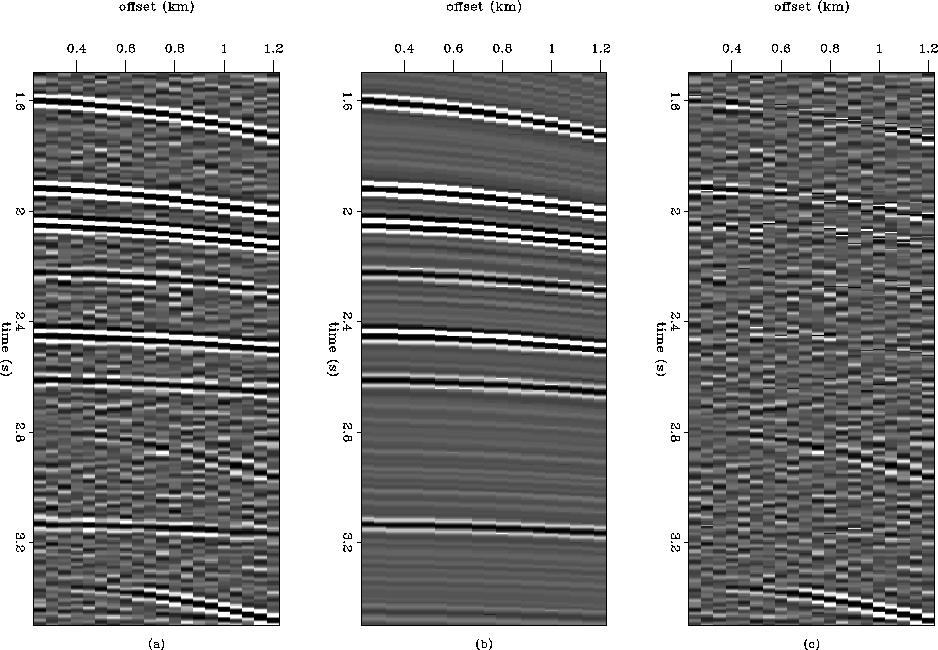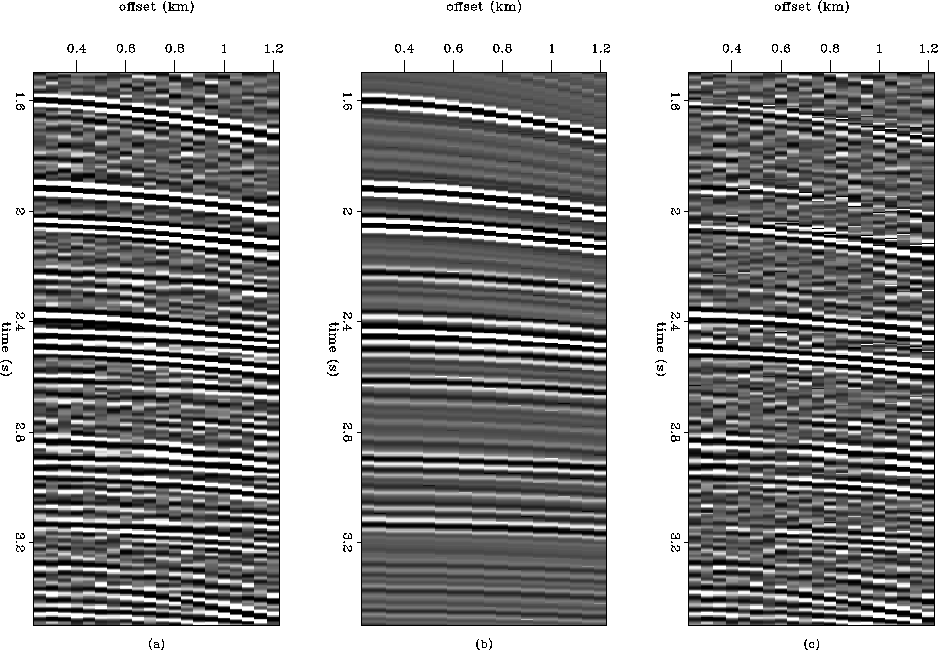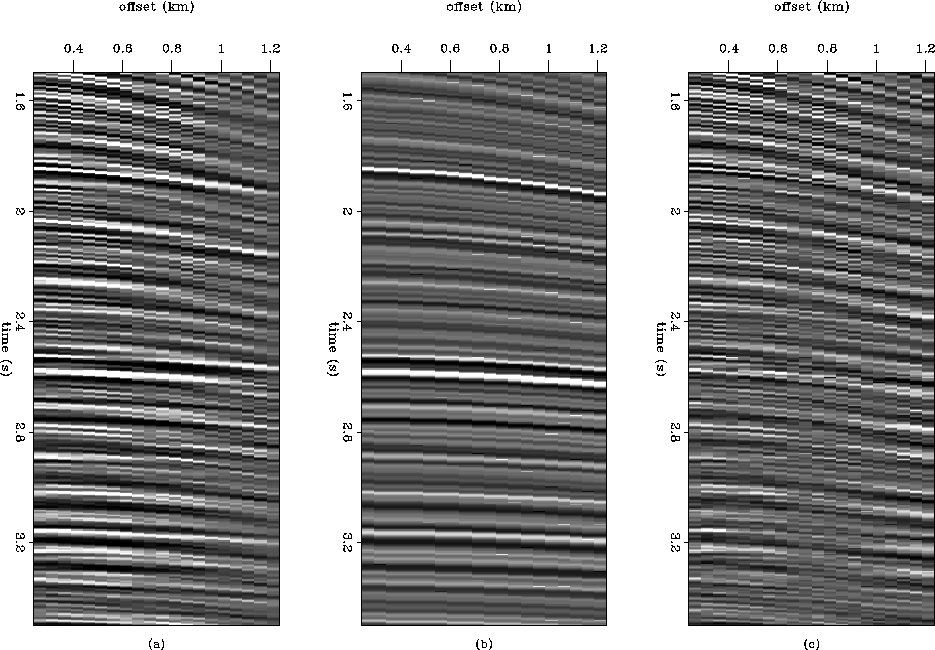 |
Figure 6 (a) A synthetic CMP gather having only primary and random noise. (b) The same CMP gather after adjoint & forward operation. (c) Difference.
In this section, I make use of the characteristic of the inverse NMO stack operator to remove nonhyperbolic events and random noise. Here, the hyperbolic events only refer to the P-wave. Therefore, the S-wave and the multiples will be regarded as nonhyperbolic events.
Figure 6 is a synthetic CMP gather consisting of P-wave, S-wave and random noise. After applying the adjoint and forward operation, we get a new CMP gather. As shown in Figure 6, most of the random noise and the two S wave events have been removed from the CMP gather with little loss of P wave information.
 |
Figure 7 is a more complicated CMP gather. In addition to P-wave, S-wave and random noise, this CMP gather contains multiples. As shown in Figure 7, after the inverse NMO stack operation, not only are the random noise and the two S-wave removed from the CMP gather, but also the multiples are well separated from the P waves.
 |
Figure 8 is a real CMP gather. The white and black events represent P wave energy. After applying the operator to this gather, the P wave energy has been preserved and the multiples and random noise are removed.
 |